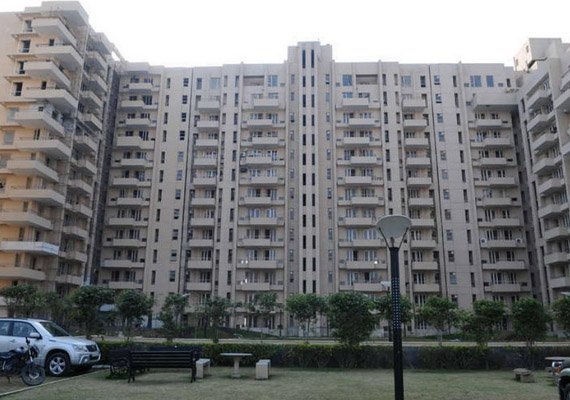New Delhi: India is on the "brink of an urban revolution" with its population in towns and cities expected to reach 600 million by 2031,according to a new UN-backed report which pegged the gap in urban infrastructure investment in the country over the next 20 years at a whopping USD 827 billion.
Over the last two decades, India's urban population increased from 217 million to 377 million and this is expected to reach 600 million, or 40 per cent of the population by 2031, said the New Climate Economy Report by the The Global Commission on the Economy and Climate released here yesterday.
"India is on the brink of an urban revolution. The current pattern of urbanisation is largely taking place on the fringe of cities, much of it unplanned and?outside the purview of city codes and bylaws, and is already imposing high costs.
Unprecedented growth is leaving municipal governments with critical infrastructure?shortages and service gaps," it said.
The report said that in India, the gap in urban infrastructure investment is estimated at USD 827 billion over the next 20 years, with two-thirds of this required for urban roads and traffic support.
Urban air pollution was projected to become the top environmental cause of premature mortality by 2050, it said.
Among the rising costs of unmanaged, unstructured urban expansion in India is urban pollution which caused 620,000 premature deaths in 2010, up more than sixfold from 2001.
Recent estimates show that the cost of environmental degradation, largely driven by sprawling cities, is "enormous" and is reducing India's GDP by 5.7 per cent or about USD 80 billion annually.
"Some 44 per cent of India's rapidly growing carbon emissions have urban origins, emanating from transport, industry, buildings and waste. This highlights the?potential benefit of a new model of urban development," it said.
The 90 largest Chinese cities account for over USD six trillion while cities in India generating two-thirds of GDP, 90 per cent of tax revenues, and the majority of jobs, with just a third of the country's population.
UN Secretary-General Ban Ki-moon called the report timely as it comes just one week before a major climate summit he will be hosting on the sidelines of the annual gathering of world leaders for the UN General Debate.
The UN chief said he looked forward to next week's climate summit, where leaders from government, business, finance and civil society are expected to deliberate challenges and deliver recommendations on how to promote low-carbon growth.
The Organisation for Economic Cooperation and Development (OECD) estimates that the social?costs of road transport in OECD countries, China and India combined are 3.5 trillion dollars per year, including the value of health impacts and lives lost.
The report said that governments should phase out direct agricultural input subsidies, and redirect the savings to pay for the provision of social goods and?provide more direct support to low-income farmers.
India provided roughly 28 billion dollars in input subsidies to nitrogenous fertilisers and electricity for pumping agricultural water in 2010.
"Potential greenhouse gas emission reductions of 200 million tonnes of CO2e (Carbon dioxide equivalent) per year have been estimated from more efficient use of fertilisers in China alone and close to 100 million tonnes of CO2e per year from more efficient use of water in India," it said.
The year-long study was conducted by leading research institutes from Brazil, China, Ethiopia, India, South Korea, the United Kingdom and United States and advised by a panel of world-leading economists.
The report further said that coal remains the default option for rapid expansion of the power supply and for heavy industry in several fast-growing economies.
India has imported more than half of new coal requirements in recent years, and may face still higher import dependence without a change of course, it said.
The report sets out a detailed 10-point Global Action Plan of recommendations to achieve prosperity and a safer climate at the same time.
It emphasises that over the next 15 years, about 90 trillion dollars will be invested in infrastructure in the world's cities, agriculture and energy systems.
It said this is an unprecedented opportunity to drive investment in low-carbon growth and bring multiple benefits including jobs.
The report further said that building better connected, more compact cities based on mass public transport can save over three trillion dollars in investment costs over the next 15 years and restoring just 12 per cent of the world's degraded lands can feed another 200 million people and raise farmers' incomes by 40 billion dollars a year.

